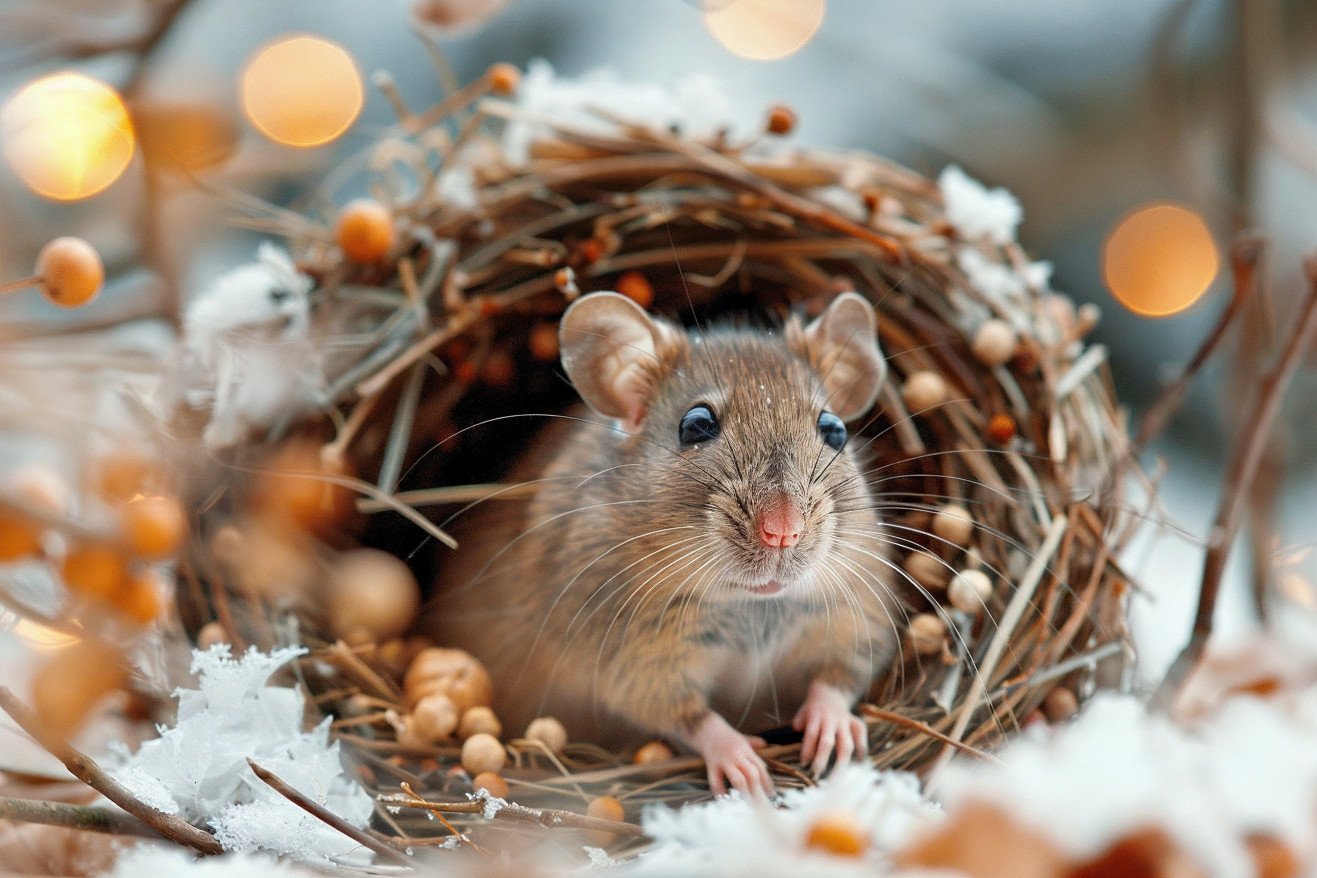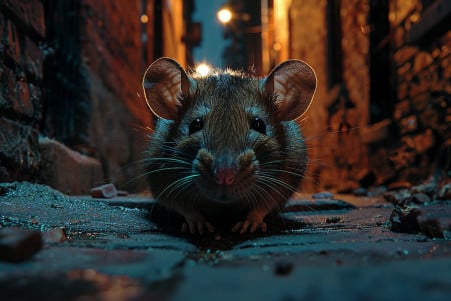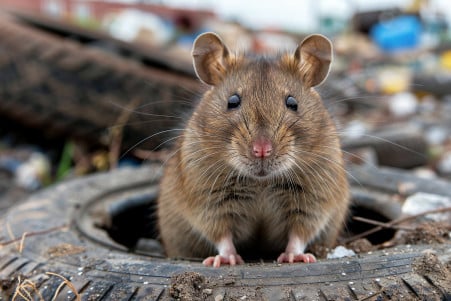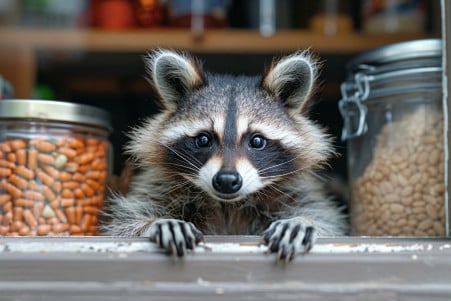Do Rats Hibernate? Exploring Rodent Winter Survival Strategies
19 April 2024 • Updated 18 April 2024

Although most rodents do not hibernate, the question of whether rats hibernate or go into torpor during the winter has been a topic of some controversy. Rats do not hibernate in the true sense of the word because they are unable to reduce their body temperature and metabolic rate to the level necessary for hibernation. However, rats may go into torpor or reduce their activity levels in response to cold temperatures in order to conserve energy until conditions improve.
In this article, we will review a number of studies from the fields of zoology, ecology, and animal behavior that have investigated rat hibernation and other adaptive behaviors. By looking at factors such as temperature, food availability, and differences between species, you will learn more about the ways in which rats and other rodents survive the winter. This knowledge can help you better understand and respect the ways in which animals adapt to their environments.
Do rats hibernate?
Foraging and Nesting Behaviors for Winter Survival
In the lead-up to winter, rats increase their foraging and hoarding behaviors to gather food to sustain them through the winter months when food becomes more scarce. Rats are opportunistic omnivores and will eat a wide range of foodstuffs, including vegetation, insects, small animals, and even human refuse.
When the weather gets colder, rats will naturally look for warm, dry, and sheltered areas, with human-made structures such as houses, outbuildings, and vehicles being popular options. Rats are nesters, and they will build their nests using shredded materials including insulation, cardboard, and plant material. They look for warm, dark, and damp places to build their nests.
These foraging, hoarding, nesting, and shelter-seeking behaviors are all important adaptations that allow rats to survive the winter without hibernating. By hoarding food, finding shelter in human-made structures, and building nests with insulation, rats can stay active while conserving energy during the winter months. Their ability to exploit human environments makes up for their lack of hibernation and ensures that their populations will continue to thrive throughout the year.
Physiological Responses to Cold
Although they don’t hibernate, rats have physiological responses that help them tolerate and regulate their body temperature in cold environments. A study in the Journal of the American Physiological Society explains that rats have a lower basal metabolic rate and better insulation than smaller rodents like mice, which helps them maintain a stable core body temperature in colder temperatures.
When rats are exposed to cold, they can increase their metabolic rate and oxygen uptake to produce more heat through non-shivering and shivering thermogenesis. Studies have also shown that rats may lower their body temperature slightly in response to cold, a controlled response that conserves energy while still allowing them to stay active.
These physiological responses, along with their behaviors like nesting and foraging, help rats survive and stay active in the winter without hibernating. A study in the Journal of Mammalogy suggests that the lower body temperatures of small mammals like rats in the winter are a controlled response to lower ambient temperatures, rather than a consequence of decreased activity.
Predator Avoidance and Winter Survival Strategies
Rats are at a higher risk of predation during the winter due to their inactivity and limited food supply. To avoid predators, rats will find shelter in safe places like burrows, caves, and human-made structures like houses and barns. ABC Home & Commercial Services notes that rats can fit through holes as small as 0.6 inches, which makes it easy for them to find their way into homes and other structures where they can stay warm and safe.
Rats are also good at moving through small spaces like pipes and cracks in walls, which helps them avoid predators while they're out foraging. Terminix notes that their nocturnal behavior also helps them avoid predators since they're more likely to be out and about when predators are less active. By using these strategies, rats can avoid predators and survive the winter even if they can't hibernate.
How Rat Winter Survival Affects Human Spaces
Because rats are looking for places to stay and food sources during the winter, their presence in human spaces can lead to a number of issues. Cascade Pest Control explains that rats can cause structural damage as they chew through materials to gain access to buildings and create nests. They can also contaminate food and living areas with their urine and feces, which can lead to the spread of diseases and other health concerns.
In addition, Plunkett's Pest Control notes that rat populations can grow quickly because of their high reproductive rates, which can make the problems associated with rat infestations even worse. Knowing about the behaviors that help rats survive the winter, which are described in the previous section, can help homeowners and pest control professionals better prevent and manage these issues.
How to Get Rid of Rats and Keep Them Away in the Winter
To keep rats away during the winter, it’s important to make sure that there are no food sources or ways for rats to get into your home. Cascade Pest Control says that sealing up cracks, holes, and gaps that are a quarter-inch or larger can help keep rats from getting into homes and buildings. Making sure that food is stored properly and that garbage is disposed of regularly and in a way that rats can’t access it can help make sure that rats don’t have access to food.
Keeping your home and property clean and free of clutter can also help keep rats from nesting in or near your home. Plunkett's Pest Control says that professional pest control services can help with severe infestations and can also help with more comprehensive prevention and control. These steps can help homeowners and property managers make sure that rats don’t cause too much trouble when they seek shelter in human environments during the winter.
Conclusion: Why It’s Important to Know How Rats Survive the Winter
Even though rats don’t hibernate, they have a number of adaptations and behaviors that help them survive the winter without going into torpor. As the weather gets colder, rats increase their foraging and hoarding behaviors to make sure they have enough food to get through the winter. They also look for warm, dry, and hidden places to live, often in human-made structures like houses and cars, where they build nests out of insulating materials.
In addition to these behaviors, rats have a number of physiological adaptations that help them tolerate and regulate their body temperature in cold weather. Research shows, rats have a lower basal metabolic rate and better insulation than smaller rodents, which helps them maintain a stable core body temperature. When they’re exposed to cold, they can increase their metabolic rate and oxygen consumption to produce more heat through non-shivering and shivering thermogenesis.
To avoid predators in the winter, rats look for safe places to live and use their ability to move through small spaces to their advantage, and their nocturnal behavior to help them move around in safety. As noted by, rats can fit through holes as small as 0.6 inches, which makes it easy for them to get into human-made structures where they can find the warmth and protection they need.
However, rats’ need for shelter and food in the winter can lead to problems and health risks in human environments. According to Cascade Pest Control, rats can damage buildings and contaminate homes, which can lead to the spread of disease and unsanitary living conditions. Knowing how rats survive the winter is important for finding ways to keep these animals from causing these problems.
By recognizing the remarkable ways rats cope with environmental challenges, we can foster a more balanced and informed perspective on coexisting with these adaptable creatures.


